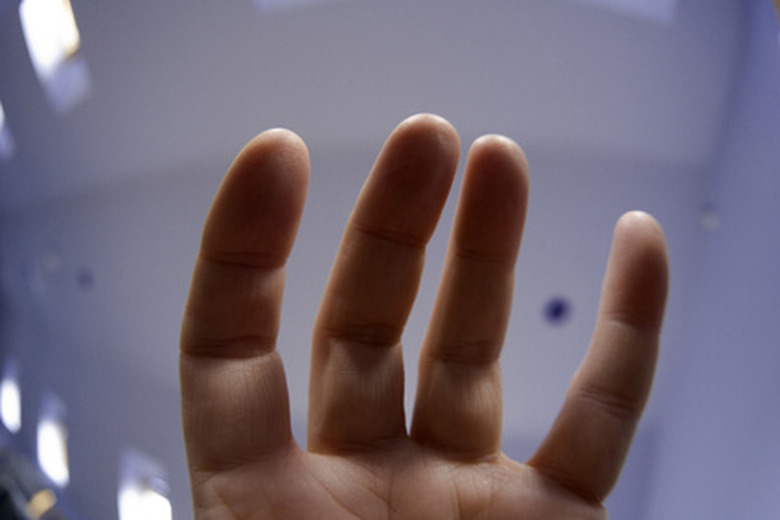Description Of The Anatomy Of A Human Finger
The anatomy of the human hand closely resembles other primates and, to a lesser degree, other mammals. A distinguishing characteristic is the thumb, but the other fingers are very similar anatomically. Together they are made from similar bones, joints, nerves, skin and other important tissue.
Carpal Bones
Carpal Bones
Carpal bones in the wrist are the intercessors between the forearms and the metacarpals of the fingers. There are eight separate carpal bones arranged in two very irregular rows. The bottom row connects to the radius and ulna of the forearm, and it is the top row from which the fingers extend.
Finger Bones
Finger Bones
The four main fingers contain metacarpal bones, which form most of the hand and extend up to the knuckles, and the phalanges, which constitute the actual fingers. These phalanges are made up of three bones. The proximal phalanx is the bone between the knuckle and the first joint of the finger. The middle phalanx extends between the first and second joint. The distal phalanx is the bone at the very tip of the finger.
Thumb Bones
Thumb Bones
The thumb is very similar to the other fingers, except it is missing the middle phalanx entirely. Instead, it contains the metacarpal, the proximal phalanx and the distal phalanx. Because of this, the thumb has two joints instead of three. It is missing the joint between the middle and distal phalanx.
Joints
Joints
The three joints of the main fingers are the metacarpophalangeal joint, or the knuckles, and two interphalangial joints: the distal and proximal. These joints are condyloid, meaning that the rounded surface of one bone fits into the elliptical cavity of another. The thumb also has an interphalangial joint, but it has a carpometacarpal joint on the knuckle, which affords it robust movement back and forth and side to side.
Other Tissue
Other Tissue
Multiple tendons, such as the flexor digitorum superficialis and profondus, connect the bones to the muscles. There are also digital nerves and arteries between the skin and bones, where fat pads the fingers. At the end of fingers are the eponchium, or the cuticles, the thickening layer of skin that surrounds the nail plate.
References
Cite This Article
MLA
Stutsman, Jacob. "Description Of The Anatomy Of A Human Finger" sciencing.com, https://www.sciencing.com/description-anatomy-human-finger-6391142/. 24 April 2017.
APA
Stutsman, Jacob. (2017, April 24). Description Of The Anatomy Of A Human Finger. sciencing.com. Retrieved from https://www.sciencing.com/description-anatomy-human-finger-6391142/
Chicago
Stutsman, Jacob. Description Of The Anatomy Of A Human Finger last modified March 24, 2022. https://www.sciencing.com/description-anatomy-human-finger-6391142/
